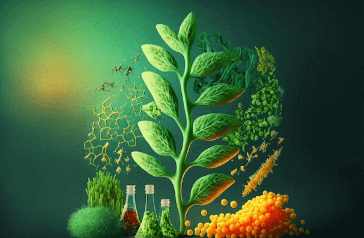Question
a.
cause premature termination of the mRNA
b.
shorten the length of the protein encoded by the gene
c.
have no effect on the transcript or protein made
d.
cause a shift in reading frame
Posted under Microbiology
Interact with the Community - Share Your Thoughts
Uncertain About the Answer? Seek Clarification Here.
Understand the Explanation? Include it Here.
Q. A nonsense mutation introduced into the DNA sequence of a gene may
Similar Questions
Explore Relevant Multiple Choice Questions (MCQs)
Q. Which of these mechanisms for thymine dimers repair lead to mutations?
View solution
Q. Frame shift mutation may occur as a result of
View solution
Q. Thymine dimers are directly repaired with the help of visible light by process known as
View solution
Q. The promoter on an expression vector used to overproduce proteins in bacteria is
View solution
Q. Differentiation of four different bases in automated sequencing systems is that each base has
View solution
Q. Which of the following infection(s) can be diagnosed by the use of polymerase chain reaction?
View solution
Q. Polymerase chain reaction basically consists of
View solution
Q. The PCR/sequencing approach to rRNA is most likely to give information about
View solution
Q. The efficiency of amplification in PCR in later cycles is reduced due to
View solution
Q. The original enzyme(s) used in PCR reaction is/are known as
View solution
Q. RNA populations can also be used as PCR templates after reverse transcription into
View solution
Q. The cloning step in PCR/sequencing analysis of microbial communities is necessary for
View solution
Q. The template for PCR is
View solution
Q. If a base replaces by another base pair, sequence mutation, resulting replacement is known as
View solution
Q. Process of mating through which two bacterial cells transfer their DNA, a cell acts as a host while other as recipient, process is known as
View solution
Q. Bacteria composed single chromosomes, having single copy of gene, known as
View solution
Q. Transfer of 'DNA' from one bacterial cell to another is carried out by
View solution
Q. Substitutions that prematurely stops synthesis of protein, by generating stop codon, called as
View solution
Q. What are approximate numbers of base pairs bacterial DNA ?
View solution
Q. Recipient bacteria in conjugation are usually
View solution
Recommended Subjects
Are you eager to expand your knowledge beyond Microbiology? We've handpicked a range of related categories that you might find intriguing.
Click on the categories below to discover a wealth of MCQs and enrich your understanding of various subjects. Happy exploring!








